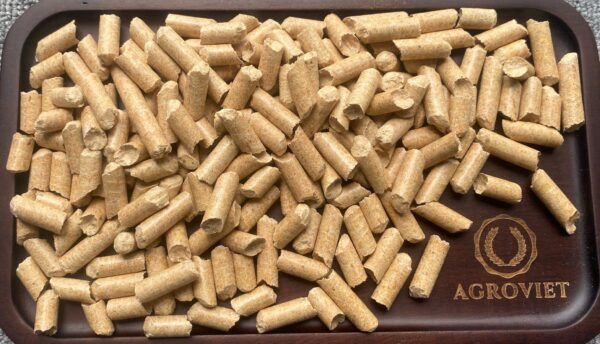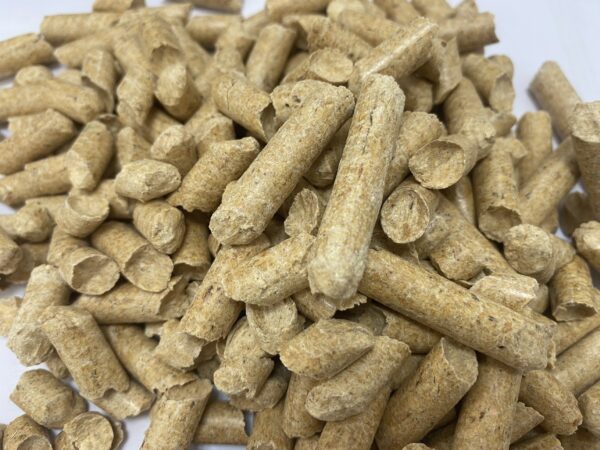When it comes to providing a safe and comfortable environment for your small pets, bedding plays a crucial role. Many pet owners are discovering that pine wood pellets are an excellent option for small animals like hamsters, rabbits, guinea pigs, and ferrets. Pine wood pellets are natural, highly absorbent, and offer superior odor control, making them a safe and practical choice for small pet bedding. In this guide, we will show you how to use pine wood pellets as safe bedding for small pets while ensuring their comfort and well-being.
1. What Are Pine Wood Pellets?

Pine wood pellets are made from compressed pine sawdust, typically sourced from sawmills as a byproduct of lumber production. These pellets are kiln-dried, removing moisture and any harmful natural oils that may irritate small animals. As a result, pine wood pellets are an eco-friendly and safe bedding material for small pets.
Their absorbent properties make them particularly effective for bedding, as they can quickly soak up moisture while remaining dry on the surface. In addition to being biodegradable, pine wood pellets also break down into a soft, fluffy texture after absorbing liquid, creating a cozy and clean environment for small pets.
2. Benefits of Using Pine Wood Pellets as Bedding for Small Pets
Using pine wood pellets as bedding offers numerous benefits for small pets and their owners. Here are some of the key advantages:
- Superior Absorbency: Pine wood pellets can absorb multiple times their weight in liquid, keeping your pet’s habitat dry and reducing the need for frequent bedding changes.
- Odor Control: Pine wood naturally neutralizes odors, which helps to minimize the smells often associated with small animals like rabbits and guinea pigs.
- Dust-Free: Unlike some traditional bedding materials like straw or wood shavings, pine wood pellets produce minimal dust. This is essential for pets with sensitive respiratory systems and helps create a healthier living environment.
- Eco-Friendly: Pine wood pellets are a sustainable choice since they are made from sawdust that would otherwise go to waste. Additionally, they are biodegradable, so they can be safely composted after use.
- Soft Texture: As pine wood pellets absorb moisture, they break down into a soft, fluffy material that is gentle on your pet’s paws and body.
3. How to Set Up Pine Wood Pellets as Bedding for Small Pets
Now that you know the benefits of pine wood pellets, let’s go over how to properly set them up as bedding for your small pets. The process is simple and effective:
- Step 1: Clean the Habitat
Start by thoroughly cleaning your pet’s cage, hutch, or enclosure. Remove any old bedding, wash the surfaces with a pet-safe cleaner, and ensure everything is dry before adding the new bedding. This helps prevent bacterial buildup and creates a fresh space for your pet. - Step 2: Add a Layer of Pine Wood Pellets
Once the habitat is clean, spread a layer of pine wood pellets across the bottom. For small pets like hamsters, guinea pigs, or rabbits, a layer that is 1-2 inches thick should be sufficient. You can adjust the thickness based on the size and needs of your pet. For pets that love to burrow, like hamsters, adding a thicker layer can enhance their experience. - Step 3: Mix in Soft Bedding (Optional)
While pine wood pellets are soft when they break down, you may choose to mix in some additional bedding material such as paper-based or fleece bedding to create extra softness. This is particularly useful for small animals that prefer to nest or burrow. However, many pets will be perfectly comfortable with pine wood pellets on their own. - Step 4: Monitor and Replace Bedding as Needed
One of the benefits of pine wood pellets is that they are long-lasting. However, it’s essential to regularly monitor the bedding to ensure it stays clean and dry. Remove any soiled areas daily and replace the bedding entirely once it becomes too saturated or begins to lose its effectiveness. Depending on your pet and its living conditions, you may only need to replace the bedding every one to two weeks.
4. Ensuring Pine Wood Pellets are Safe for Your Pets

Although pine wood pellets are safe for most small pets, there are a few precautions to take when using them as bedding. First and foremost, it’s essential to choose high-quality pine wood pellets specifically designed for pet use. Kiln-dried pine wood pellets have gone through a drying process that removes any harmful phenols (natural oils found in pine trees) that could cause respiratory or skin irritation in sensitive animals.
You should avoid using non-kiln-dried or scented pine products, as these may still contain potentially harmful chemicals that can negatively affect your pet’s health. Always double-check the packaging to ensure that the pine wood pellets are free from additives and are safe for small animals.
5. Best Practices for Using Pine Wood Pellets with Specific Small Pets
Different small pets have varying bedding needs, and pine wood pellets can be adapted to suit these requirements. Below are some best practices for using pine wood pellets with specific small animals:
- Hamsters: Hamsters love to burrow, so it’s best to provide a deep layer of bedding. Pine wood pellets can be mixed with softer materials like shredded paper to create a burrowing environment. Be sure to regularly check for moisture buildup in their tunnels.
- Rabbits: Rabbits tend to produce a significant amount of waste, making pine wood pellets an excellent choice due to their absorbent properties. Place a thick layer of pellets in their litter box or living area and monitor for moisture. Pine wood pellets will help reduce the need for frequent bedding changes while keeping the environment clean.
- Guinea Pigs: Guinea pigs are prone to respiratory issues, so it’s important to use dust-free bedding. Pine wood pellets are an excellent choice for their cage, as they won’t produce irritating dust. Add a layer of soft bedding on top to make the environment even cozier for them.
- Ferrets: Ferrets are clean animals but still require bedding that controls odors and absorbs moisture effectively. Pine wood pellets offer superior odor control, making them a great option for ferret bedding. Just be sure to replace soiled areas regularly to prevent any strong smells.
6. Cleaning and Maintenance of Pine Wood Pellet Bedding
Maintaining a clean environment is essential to the health of your small pets, and pine wood pellets help simplify this task. Here’s how to effectively clean and maintain pine wood pellet bedding:
- Daily Spot Cleaning: Check the bedding daily and remove any soiled or wet areas. Pine wood pellets absorb moisture and expand, so you’ll be able to easily identify where your pet has urinated. Removing soiled areas will prevent bacteria growth and keep odors at bay.
- Full Bedding Replacement: Every one to two weeks, or when the bedding is saturated, replace all the pine wood pellets with a fresh layer. Completely clean the cage during this time to ensure a sanitary environment.
- Composting Used Bedding: Pine wood pellets are biodegradable, so after cleaning, consider composting the used bedding. This will reduce your household waste and contribute to a more sustainable lifestyle.
Conclusion

Pine wood pellets offer a safe, effective, and eco-friendly solution for small pet bedding. Their absorbent properties, odor control, and natural comfort make them ideal for a wide range of small animals, from rabbits to guinea pigs and hamsters. By following the guidelines in this article, you can ensure that your pets enjoy a clean and comfortable habitat while making the most of the benefits pine wood pellets have to offer.
